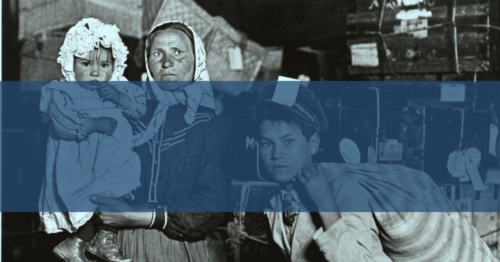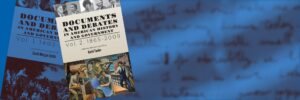
Understanding the Immigrant Experience Through History and Literature
Pam Cummings, 2018 Madison Fellow for Arkansas and a student in the Master of Arts in American History and Government program, chooses her elective courses “strategically” to deepen her understanding of the period of history she teaches. At Benton High School in Arkansas, she teaches honors and regular-level modern US history, the course mandated by Arkansas for 11th graders. More restricted in chronological scope than the course taken by many juniors around the country, it begins in 1890 and concludes in 2020. Seeing that last summer’s offerings included a course on the history of—and literature about—immigration to the United States, Cummings knew it would provide knowledge and insights she could use. “Immigration ties in all the way through the course I teach.”
Indeed, the period Cummings teaches begins during the great wave of immigration to the United States from central, eastern and southern Europe, as those fleeing war, famine and religious persecution in their countries of origin arrived to take jobs in rapidly industrializing northern cities. Further along, the course covers the rise of anti-immigrant sentiment as the US entered World War I; the Immigration act of 1924 that greatly restricted the entry of those not arriving from Northern Europe; and the Immigration and Naturalization Act of 1965, which abolished the quota system based on national origin that the 1924 act had imposed. It continues through the debates over undocumented immigrants that arose during the 1980s and continue today.
“I thought I had a good basic knowledge of immigration, but this helped me dig deeper into the experience of immigrants at the personal level,” Cummings said. This happened because of the course’s interdisciplinary design. Co-taught by historian Dan Monroe and literary scholar Suzanne Brown, the course combined background on the history of American immigration with readings in primary historical documents, fiction, poetry, and memoirs.
In Immigrant Families, Successive Generations Adapt Differently
One reading struck Cummings forcefully: an essay written in the 1950s by sociologist Will Herberg. He described the intergenerational process through which immigrant families adapt to American life and gain a sense of American identity. Typically, “the first generation struggles” to learn English and American cultural habits; they remain connected to the culture they left behind. Although they support the second generation’s efforts to assimilate, they must watch their children discarding the cultural practices and beliefs they still cherish. However, the third generation, secure in their identity as Americans, often try to reclaim some of the heritage their parents rejected.
Read more about Cummings’ experience in the course at Meet Our Teacher Partners.



